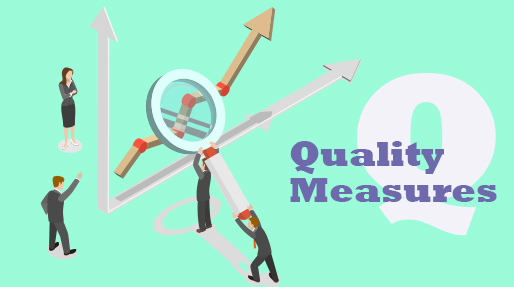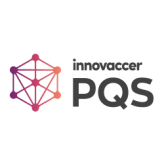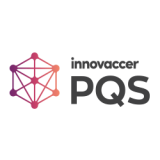
 It is almost halfway through the 2020 calendar year, and your pharmacy team has been busy checking some of the quality measures that you see in EQuIPP®. While there are more than twenty (20) measures available to be hosted in EQuIPP® today, most pharmacies will see a lower number of measures. This will be dependent upon their geographic location, the payers in their location that utilize EQuIPP® for tracking performance measurement, and the measures that they are tracking.
It is almost halfway through the 2020 calendar year, and your pharmacy team has been busy checking some of the quality measures that you see in EQuIPP®. While there are more than twenty (20) measures available to be hosted in EQuIPP® today, most pharmacies will see a lower number of measures. This will be dependent upon their geographic location, the payers in their location that utilize EQuIPP® for tracking performance measurement, and the measures that they are tracking.
If we focus on just an individual pharmacy, they may see 10 or fewer measures in their EQuIPP® dashboard. Taking it a step further, most pharmacies will place a primary focus on the Cholesterol PDC, Diabetes PDC, RASA PDC and Statin Use in Persons with Diabetes measures, as they are integral to most performance programs in 2020. The point here is that there are many potential measures a pharmacy could or should be tracking, yet most pharmacies will focus on just a few measures at any given time. For the time being, that approach works – but next year or in future years, measures may be updated, changed or other measures may be added to the program. To prepare for these new measures or changes to existing measures, we must fully understand measures; so, let’s do just that and review some different types of quality measures!
What are quality measures?
Quality measures help measure or quantify healthcare processes, outcomes, patient perceptions, and organization structure/systems that are associated with the ability to provide high-quality healthcare and that relates to goals for the healthcare system. Basic concepts of quality measures go back as early as the 1850s when sanitation and hygiene standards were shown to decrease mortality for soldiers.
Who develops quality measures?
Numerous organizations are involved with development, endorsement and promotion of quality measures. Organizations like CMS, NQF, NCQA are readily recognized as leaders in this space. If we look specifically at medication-use and pharmacy-related measures, the Pharmacy Quality Alliance (PQA) is recognized for developing measures.
How is data collected for measures and how are scores reported?
Quality measures are assessed based on their specifications or definitions. What information is required for a measure will ultimately differ based on how the measure is designed and endorsed by the organization that licenses the measure.
Data or information required to assess quality measures may include items like claims, assessment instruments, chart details and registries. Typically, measure developers will have various standards for data consistency and availability that are considered with measure development.
How can I find out more about quality measures?
With so much information about quality measures in healthcare, there are many resources available. For pharmacists, it would be recommended to learn more about measures and organizations that develop medication-use measures, which can be applicable to pharmacists.
Start by checking out two organizations: Pharmacy Quality Alliance (PQA) and the National Committee for Quality Assurance (NCQA). In addition, since many measures in the Medicare Part D Star Ratings include medication-use measures, stay abridged of updates from the Centers for Medicare & Medicaid Services (CMS).
Finally, check out the PQS Education Library for more information on current measures that may be applicable to pharmacy today!
Are there different types of quality measures?
Yes, there are different types of quality measures referenced with the “Donabedian Model”. These three types of measures include:
- Structural Measures- Generally geared for consumers or other healthcare providers, this type of measure gives a sense of capacity, systems and processes to provide high-quality care.
- Process Measures- These measures typically relate to what services are available or provided by the provider or health system. These will generally align with accepted recommendation for effective clinical practice.
- Outcome Measures- This type of measure is directly related to health status of patients and is generally regarded as the “gold standard” for measuring quality. Ultimately, achieving the best outcome for the patient is the preferred result, and thus this type of measure is considered more integral to quality when compared to either Structural or Process measures.
What should I consider about quality measures for future years?
Continue to focus on improvement strategies that matter for quality measures that your pharmacy deals with now. But also, stay informed with other quality measures which are being developed or recommended and that could be relevant to pharmacy. The best way to be successful with a measure starts with understanding the measure and creating an action plan! Checking performance results is a good thing to do, but ultimately checking the result each month is not as impactful as creating an action plan, checking the results each month AND then modifying your actions and interventions to improve performance results.
Quality measures in healthcare have been around for a very long time and utilization of quality measures continues to be involved. It is an important endeavor for all healthcare providers to understand quality measures as these measures may impact their organization and their patients. Understanding how to improve performance with these measures is a great first step to gaining some success.
For those pharmacists who want to be more engaged with quality measures, there may be an opportunity to assist in developing or educating about quality measures.
- Sign up for newsletters or alerts from measure developers.
- Stay in touch with leaders in the pharmacy industry that provide education updates.
- There may also be opportunities with organizations to work with measure developers to be an active member!
- Talk with organizations that you are affiliated with to see how you can engage with measure developers.
While quality measure improvement is an ongoing process, it takes lots of input from active healthcare professionals to help develop new concepts for measures and how they can effectively be used in the healthcare marketplace. I personally look forward to seeing how other pharmacists become more engaged with this process!
Tools & Information from PQS:
PQS/EQuIPP: How Data is Transmitted and Received
References:
https://www.cms.gov/Medicare/Quality-Initiatives-Patient-Assessment-Instruments/QualityMeasures
https://www.ahrq.gov/talkingquality/measures/types.html
https://www.ncbi.nlm.nih.gov/pmc/articles/PMC3926916/
https://www.aafp.org/practice-management/improvement/measures.html
http://www.qualityforum.org/Measuring_Performance/Measuring_Performance.aspx

